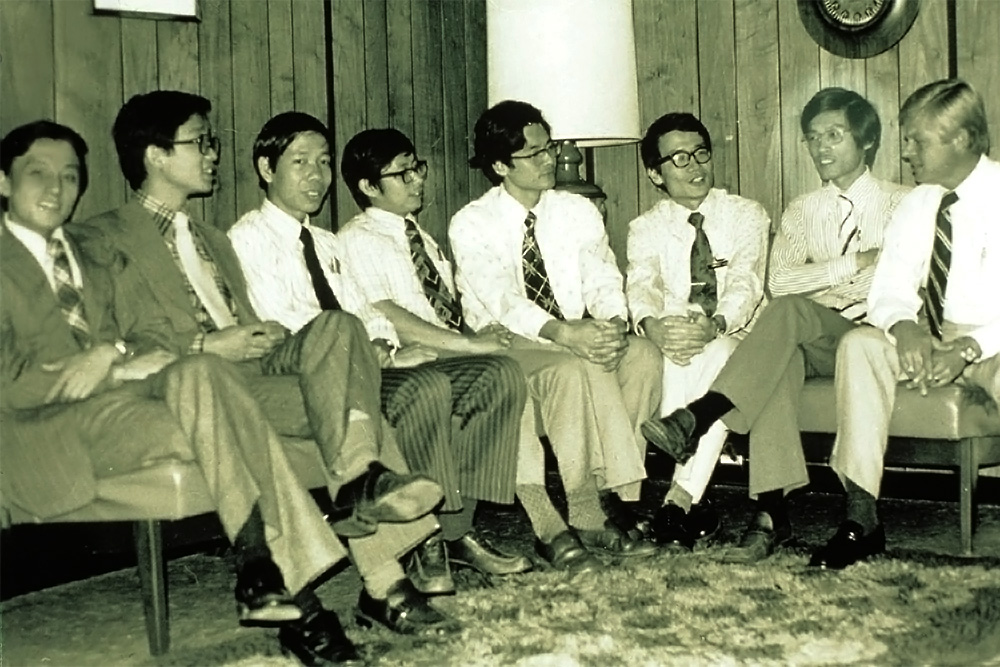Feature
The Birth of Taiwan’s Semiconductor Industry
Since its establishment in 1973, ITRI has played an integral part in pioneering Taiwan’s IC development. Yet it is little known that the world-famous semiconductor industry in Taiwan all started with a breakfast meeting.
The time was 1974. In an unassuming breakfast shop, seven men were having a meeting, formulating something big for Taiwan. These individuals were the then Minister of Economic Affairs Yun-Suan Sun, Director General of Transportation and Communications Yu-Shu Kao, ITRI President Chao-Chen Wang, Telecommunication Laboratories Director Bao-Huang Kang, Executive Yuan Secretary-General Hua Fei, Director General of Telecommunications Hsien-Chi Fang, and Radio Corporation of America (RCA) Laboratories Director Wen-Yuan Pan. Over a meal, the semiconductor blueprint that would shape Taiwan’s future was established.
Wen-Yuan Pan, one of the key players, shut himself away after the meeting to draft a proposal for the IC development project. ITRI’s Electronics Research and Service Organization was the first to join this project. Two years later, a contract initiating the IC technology transfer and licensing was signed between ITRI and RCA, marking the official introduction of semiconductor technology to Taiwan.

ITRI and RCA signed an IC technology transfer and licensing contract in 1976.
A group of 19 skilled engineers were then handpicked by ITRI and sent to RCA for intensive training in the US. The engineers were divided into teams, each specializing in a different aspect of IC development. One team studied IC design in New Jersey, another delved into manufacturing processes in Ohio, a third team mastered verification procedures in California, while the fourth team honed their skills in equipment handling in Florida.
The return of these talented engineers marked a new era for Taiwan’s semiconductor industry. They combined their newfound expertise and laid the foundations of an IC demonstration factory. In 1977, Taiwan’s first IC production line was launched, and within six months, it achieved a 70% yield rate, surpassing even the original RCA plant’s 50% yield rate. The first batch of Taiwan-made ICs for electronic watches was produced the next year, which made a splash and transformed the nation into the world’s third-largest electronic watch exporter.
Encouraged by this success, ITRI took a step forward and birthed United Microelectronics Corporation (UMC) in 1980—one of the earliest to make its home in Hsinchu Science Park—and transferred its 4-inch wafer technology and its team of researchers to the spin-off company. UMC, too, flourished in the wake of its creation, but global technology protectionism posed a challenge for Taiwan to acquire overseas technology.

Taiwan’s first 4-inch wafer manufacturer, UMC, was spun off by ITRI in 1980.
Undeterred, ITRI decided to initiate the very large-scale integration (VLSI) project. Notably, it was also around the same time that Morris Chang started his tenure as ITRI President. Within two years of the project’s inception, the VLSI demonstration factory became a reality.
In 1987, ITRI spun off a chip manufacturing facility, transferring fabs, equipment, technologies, and 98 professionals to the company. This venture was none other than the now world-renowned Taiwan Semiconductor Manufacturing Company (TSMC). Having a dedicated foundry to produce chips for other semiconductor companies was a new concept at the time. This IC OEM model allowed IC design companies to commission TSMC to produce their designs without the need for costly fabs, spurring the establishment of numerous new IC design companies in Taiwan. In 1989, ITRI spun off Taiwan Mask Corporation, further lowering the manufacturing cost of IC products and streamlining procedures, which bolstered market competitiveness. As the 1990s dawned, Taiwan’s semiconductor industry had developed a complete industry chain.
ITRI continued its pursuit of excellence in the world of semiconductors. In 2010, ITRI established Asia’s first 3D IC R&D laboratory equipped with a comprehensive through-silicon via (TSV) process for 12-inch 3D ICs. Collaborating with the world-leading semiconductor IP design company Arm in 2021, ITRI set up an innovative IC design platform. ITRI also launched the Southern Rainforest Project to develop materials, components, equipment, and applications and cultivate talent in compound semiconductors, spurring growth in automotive power and green energy electronics.